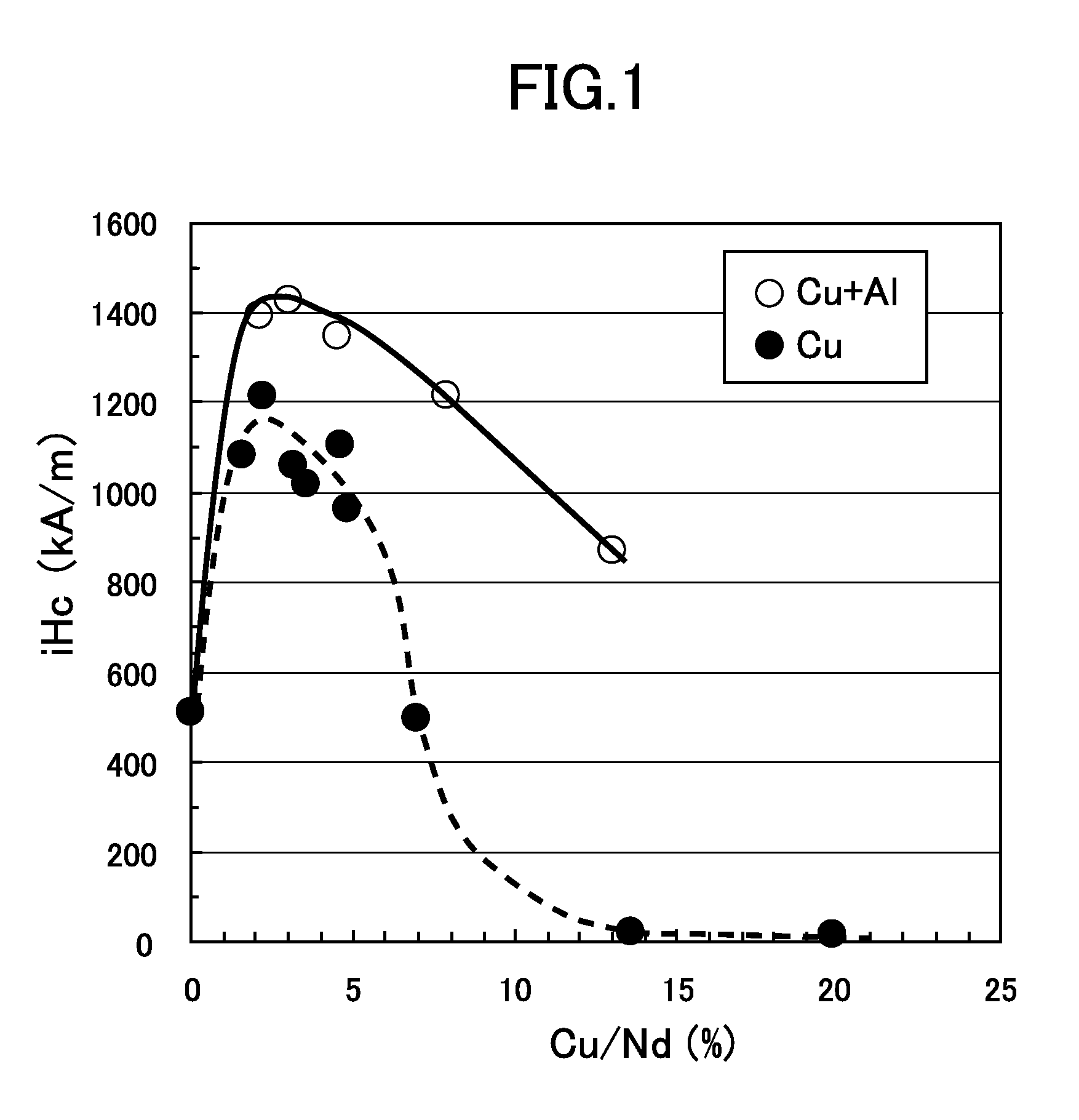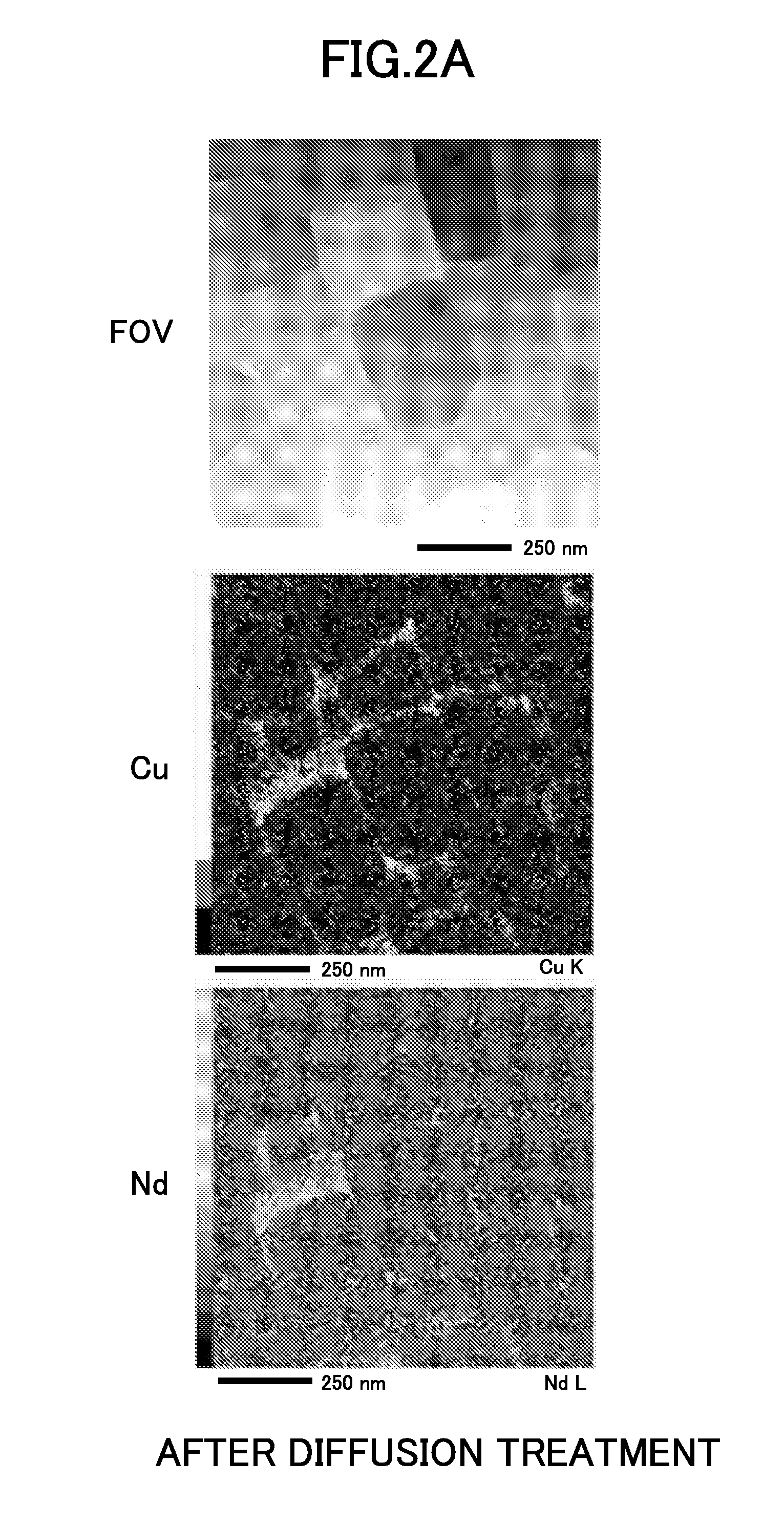Anisotropic rare earth magnet powder, method for producing the same, and bonded magnet
- Summary
- Abstract
- Description
- Claims
- Application Information
AI Technical Summary
Benefits of technology
Problems solved by technology
Method used
Image
Examples
example 1
Production of Specimens
(1) Preparation of Magnet Raw Materials
[0084]Various kinds of magnet raw materials comprising magnet alloys having the composition shown in Table 1 were prepared (hereinafter, component composition will be all expressed in at. %. Nd in Table 1 corresponds to Rm.). These magnet raw materials were produced as follows. First, raw materials weighed so as to have the composition shown in Table 1 were melted and magnet alloys (base alloys) casted by strip casting process (hereinafter referred to as “SC process”) were obtained. These magnet alloys were held in an Ar gas atmosphere at 1140 deg. C. for ten hours, thereby homogenizing structure (a homogenization heat treatment step).
[0085]Next, the magnet alloys after subjected to hydrogen decrepitation in a hydrogen atmosphere under a hydrogen pressure of 0.13 MPa were subjected to hydrogenation treatment (d-HDDR), thereby obtaining powdery magnet raw materials. This hydrogenation treatment was conducted as follows. It...
example 2
[0113]The following respective specimens were produced in addition to the aforementioned specimens and evaluated in various points.
(1) Specimen No. 6-1
[0114]Specimen No. 6-1 shown in Table 4 comprised a magnet powder obtained by changing the temperature of the high-temperature hydrogenation step from 840 deg. C. to 860 deg. C. Overall composition, magnetic characteristics and so on of the thus obtained specimen are shown in Table 4. As apparent from Table 4, coercivity (iHc) of magnet powder can be further increased to about 1500 to 1650 kA / m by controlling the high-temperature hydrogenation step (the structure stabilization step) and applying the diffusion treatment. Production of the respective specimens was carried out under the same conditions as those of Example 1 (hereinafter referred to as the “standard conditions”), unless otherwise specified. The same applies to the following specimens.
(2) Specimen Nos. 7-1 to 7-13
[0115]Specimen Nos. 7-1 to 7-13 shown in Table 5 respectivel...
PUM
| Property | Measurement | Unit |
|---|---|---|
| Length | aaaaa | aaaaa |
| Fraction | aaaaa | aaaaa |
| Percent by atom | aaaaa | aaaaa |
Abstract
Description
Claims
Application Information
 Login to View More
Login to View More - R&D
- Intellectual Property
- Life Sciences
- Materials
- Tech Scout
- Unparalleled Data Quality
- Higher Quality Content
- 60% Fewer Hallucinations
Browse by: Latest US Patents, China's latest patents, Technical Efficacy Thesaurus, Application Domain, Technology Topic, Popular Technical Reports.
© 2025 PatSnap. All rights reserved.Legal|Privacy policy|Modern Slavery Act Transparency Statement|Sitemap|About US| Contact US: help@patsnap.com



